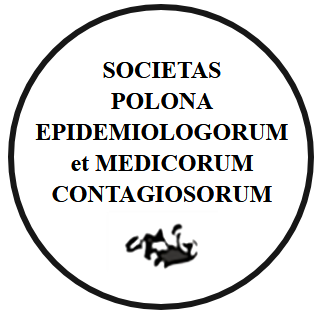REVIEW PAPER
Infectious diseases in Poland in 2021
1
Zakład Epidemiologii Chorób Zakaźnych i Nadzoru, Narodowy Instytut Zdrowia Publicznego PZH - Państwowy Instytut Badawczy, Polska
Submission date: 2024-01-05
Final revision date: 2024-03-26
Acceptance date: 2024-03-26
Publication date: 2024-05-20
Corresponding author
Magdalena Rosińska
Zakład Epidemiologii Chorób Zakaźnych i Nadzoru, Narodowy Instytut Zdrowia Publicznego PZH - Państwowy Instytut Badawczy, Polska
Zakład Epidemiologii Chorób Zakaźnych i Nadzoru, Narodowy Instytut Zdrowia Publicznego PZH - Państwowy Instytut Badawczy, Polska
Przegl Epidemiol 2023;77(4):411-428
KEYWORDS
TOPICS
ABSTRACT
OBJECTIVE OF THE WORK. As 2021 was the second year of COVID-19 pandemic we expect the continuous impact of the pandemic on other infectious diseases. We aimed at reviewing the national infectious surveillance data based on available surveillance reports (Epidemiological Chronicle) to summarize the infectious disease situation in 2021.
MATERIAL AND METHODS. National infectious disease surveillance system collects mandatory notifications from physicians and laboratories as well as epidemiological investigation reports prepared by State Sanitary Inspection, where relevant. We also include mortality data based on the reports of Statistics Poland office.
RESULTS AND DISCUSSION.
In 2021, there were 2,852,789 cases of COVID-19 reported, corresponding to the incidence of 7475.4 per 100,000 and 90,126 deaths related to COVID-19. For most of diseases the incidence remained lower than before the pandemic. This included influenzea and influenzea-like illness incidence (- 5.4% vs 2020 and – 37.6% vs median 2015-2019) and tuberculosis incidence (+9.3% vs 2020 and -35.9% vs median 2015-2019). The incidence was lower than in 2020 for: pertussis (-75.7%), measles (-54.9%), rubella (48.7%), mumps (-16.4%), chickenpox (-19.0%) or H. influenzea invasive disease (-33.0%). A notable exception to these trends was Clostridium difficile intestinal infections incidence, which was higher by 88.2% from the 2015-2019 median with 21,157 case and 1,120 fatalities reported in 2021. There was also an almost 4-fold increase in norovirus infections incidence. The number of chronic hepatitis infections diagnoses were substantially lower than median for 2015-2019 (-53.7% for HBV and – 68.8% for HCV). The COVID-19 pandemic still played the crucial role as a public health problem, but its impact on other infectious diseases was less clear than in 2020. The reduction in the number of registered cases was with likely attributable to non-pharmaceutic interventions and to delays in registration due to reduced public health resources.
Share
RELATED ARTICLE
We process personal data collected when visiting the website. The function of obtaining information about users and their behavior is carried out by voluntarily entered information in forms and saving cookies in end devices. Data, including cookies, are used to provide services, improve the user experience and to analyze the traffic in accordance with the Privacy policy. Data are also collected and processed by Google Analytics tool (more).
You can change cookies settings in your browser. Restricted use of cookies in the browser configuration may affect some functionalities of the website.
You can change cookies settings in your browser. Restricted use of cookies in the browser configuration may affect some functionalities of the website.





